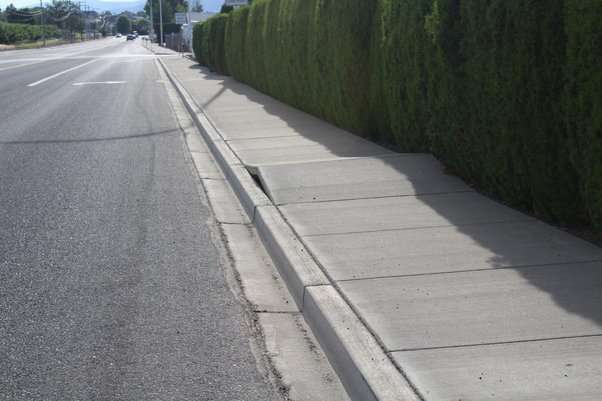Roadside Paving: Benefits and Considerations

Roadside paving is an essential aspect of infrastructure development. The process of roadside paving involves the construction of a smooth surface on the roadside, providing an even and safe driving experience for commuters. Paving can also enhance the looks of the area and increase property value when its done by Professionals. Here, we will discuss the benefits, types and considerations of roadside pavement.
Benefits of Roadside Paving
Safety
One of the primary benefits of paving on the roadside is improved safety for travellers. Uneven and rough surfaces can be dangerous for drivers, cause accidents and damage to vehicles. Roadside paving helps reducing the risk of accidents and improving safety.
Aesthetics
Paving can also enhance the aesthetics of the area. An even and smooth surface can improve the overall appearance of the roadside, making it more attractive to residents and visitors. The aesthetic appeal of the area can also increase property value, making it an attractive for investors.
Durability
Paving on the roadside is designed to be durable, lasting for several years without requiring significant maintenance. The surface can withstand the weight of heavy vehicles, making it ideal for busy roads and highways.
Types of Roadside Pavement
1.Asphalt roadside Paving:
Asphalt is a preferred choice for roadside pavement. Its dark tone accelerates the melting of snow and ice, and the smooth texture offers excellent grip for cars by creating a friction between tyres and surface. Asphalt road sides may be maintained adequately for a long time with periodic maintenance.
2. Roadside Paving with Concrete:
Concrete is a strong and durable material for paving roadways. Its versatility allows for a variety of solutions and patterns, and it delivers a modern and sleek design. The long-term cost-effectiveness is achieved by little upkeep and durability, even with a possibly higher initial cost.
3. gravel paving:
This is affordable and offers good drainage. The loose texture of gravel eliminates the chance of floods by allowing water to flow through. Gravel pavement is a great option for a traditional and natural look, yet it could require frequent refills. Experts avoid to use gravel on big projects.
4. Interlocking Pavers:
An eye-catching choice for roadside pavement, interlocking pavers are often made of concrete or natural stone. A tough surface is produced by the interlocking design, and innovative designs may be made because to a wide range of colours and forms. it is simple to repair it if its damaged.
5. Permeable Paving:
This environmentally friendly approach reduces runoff and contributes to regenerating groundwater by allowing water penetrate the surface. Because it minimises environmental impact and enables efficient management of storm water, this kind of pavement is perfect for urban sustainability.
Considerations for Paving on Roadside
Environmental Impact
Sometimes paving can result in the destruction of natural habitats and ecosystems, leading to biodiversity loss and environmental damage. It is important to take measures to minimize the impact of the project on the environment. For example, using environment friendly materials or implementing erosion control measures can help mitigate the negative impact.
Roadside Paving Cost
Paving on the roadside can be a significant investment, and it is important to consider the cost of the project before undertaking it. The cost will depend on various factors, including the size of the area to be paved, the type of materials used, and the complexity of the project. It is important to budget carefully and obtain accurate cost estimates before starting the project.
Maintenance
Although roadside pavement is designed to be durable, it still requires regular maintenance to ensure it remains in good condition. The maintenance requirements will depend on the type of materials used and the amount of traffic on the road. It is important to factor in the cost and frequency of maintenance when budgeting for the project.
Regulations
Before starting any pavement project, it is important to be aware of any regulations or permits required. Depending on the location, there may be zoning or environmental regulations that must be followed. Failure to comply with regulations can result in fines and delays in completing the project.
Conclusion
In conclusion, roadside paving can provide numerous benefits, including improved safety, enhanced aesthetics, and durability. However, it is important to consider the environmental impact, cost, maintenance requirements, and regulations before undertaking the project. Proper planning and careful consideration can help ensure the project is successful and provides long-term benefits.
FAQ:
Q.1: What is the primary purpose of roadside paving?
A: It enhances safety, aesthetics, and longevity of surfaces.
Q.2: Why is asphalt a popular choice for roadside paving?
A: Asphalt is preferred for its durability, grip and effective snow melting.
Q.3: How does concrete differ from asphalt paving?
A: Concrete offers a modern look, longevity, and options in design while asphalt provides grip and it is more durable than concrete as it can bear more pressure.
Q.4: What makes gravel paving a budget-friendly option?
A: Gravel is cost-effective, provides good drainage due to flexible nature and has an attractive aesthetic.
Q.5: What are interlocking pavers, and why are they popular?
A: Interlocking pavers offer durability, creative designs, and easy replacement.
Q.6: How does permeable paving contribute to sustainability?
A: Permeable paving allows water to pass through, aiding in sustainable water management.
Q.7: What benefits does well-maintained Pavement provide?
A: Well-maintained paving enhances safety, property values, and community standards.
Q.8: Why is drainage important in roadside paving?
A: Proper drainage prevents water accumulation, reducing the risk of flooding and pavement damage.
Q.9: What factors should be considered when choosing a roadside paving material?
A: Factors include budget, aesthetics, durability, and the specific needs of the area.
“Who knew asphalt could be so riveting? This blog on roadside paving is the ‘Fast and Furious’ of infrastructure reads. Buckle up for the ride of your life through the thrilling world of asphalt! Spoiler alert: it’s not just black stuff on the road; it’s the unsung hero of our daily drive!”